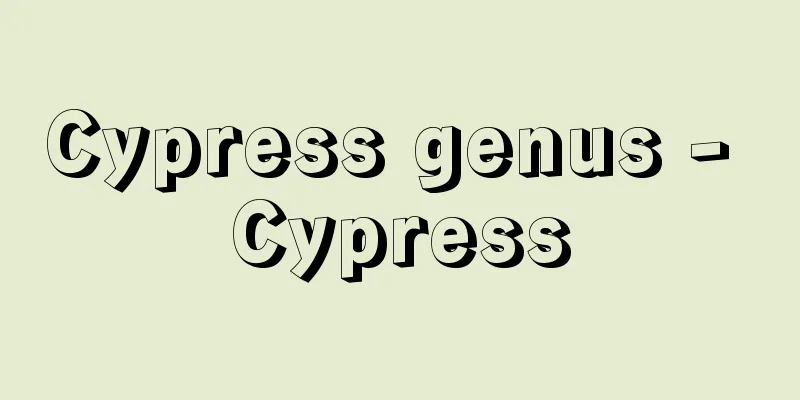Comparative linguistics

|
A branch of linguistics that compares languages with a common origin and examines their similarities and differences historically and developmentally. It is also called historical comparative linguistics. Languages with the same origin are called cognate languages, their source languages are called ancestor languages or common root languages, and the set of languages that are thought to have branched off from the same ancestor language is called a language family. Traditional classifications of languages are often based on such language families. Examples include Indo-European, Uralic, Altaic, Hamitic-Semitic, Bantu, Austronesian, and Sino-Tibetan. Latin belongs to the Indo-European family along with Greek and Sanskrit, but Romance languages such as Spanish, French, and Italian have Latin as their ancestor and form separate subfamilies that branched off from it. The largest group of cognate languages is sometimes called a language family, and the subgroups are sometimes called language branches, but language groups based on cognate relationships can have various stages. It is rather rare that the protolanguage is known, as in the case of Latin in relation to Romance languages, and many have been lost and not passed down, so the relationship between languages is often only a theoretical assumption. However, language change is by no means random, but is governed by a high degree of regularity, and between related languages that branched off from the same language, regular similarities can be observed in terms of phonology, morphology, and vocabulary. Such phenomena are called correspondences, and particularly remarkable regularities appear in phonological correspondences, which are called the law of phonological correspondences, or simply the law of phonetic correspondences. The comparative method, which is considered the most basic tool in historical linguistics, is an explanatory method that uses the regularities of correspondences observed between related languages to reconstruct the lost protolanguage and relate it to this presumed protolanguage, thereby clarifying the relationship between the languages in question historically, that is, diachronically. The description of related languages using this method is called comparative grammar. Modern linguistics began with "Indo-European comparative grammar," which was born in the early 19th century, and research methods and principles were established and developed in this field. Since then, the comparative method has been applied to many other language families, with some success. However, this method is only effective when applied to languages that are assumed to be related, and is almost ineffective when this relationship is unclear, or when the relationship is so distant that no regularity in correspondence can be found, even if the languages are related. The comparative method is not intended to investigate the genealogical relationship of languages itself, and research that does so is called linguistic phylogenetics. Furthermore, the factors that have produced the diversity and similarities of human languages are not necessarily due to divergent development from the same origin. When languages of different lineages continue to come into contact with each other for a long period of time in the same region, they may develop significant common features. A group of languages that share such regional characteristics is called a language association or a linguistic area. Comparative methods cannot be applied to such convergent development based on the geographical spread of linguistic change. It is the role of linguistic geography and regional linguistics to deal with such phenomena. There are also fields such as linguistic typology, which compares and considers languages without regard for genealogical relationships, and investigates their classification and the universality of human languages, and contrastive linguistics, which focuses on the study of the individual characteristics of specific languages. [Katsumi Matsumoto] "Comparative Linguistics" by Harushige Takatsu (1950, Iwanami Shoten)" ▽ "Introduction to Comparative Linguistics" by W.B. Lockwood, translated by Yoshiro Nagano (1978, Taishukan Shoten)" Source: Shogakukan Encyclopedia Nipponica About Encyclopedia Nipponica Information | Legend |
|
共通の起源を有する諸言語を比較することによって、それらの相似・異同の関係を歴史的・発生的に考察する言語学の一部門。歴史比較言語学ともいう。起源を同じくする諸言語を同系語、その源となった言語を祖語または共通基語、そしてこのような同一の祖語から分岐した(と想定される)諸言語の総体を語族とよぶ。従来の言語の分類は、多くの場合、このような語族に基づいて行われている。たとえば、インド・ヨーロッパ(印欧)語族、ウラル語族、アルタイ語族、ハム・セム語族、バントゥー語族、オーストロネシア語族、シナ・チベット語族などである。ラテン語はギリシア語やサンスクリット語などとともに印欧語族に属するが、スペイン語、フランス語、イタリア語などのロマンス諸語はこのラテン語を祖語とし、そこから分岐した別個の下位語族を形づくる。同系語のもっとも大きな群を語族、それの下位群を語派とよぶことがあるが、同系関係に基づく言語群にはさまざまな段階がありうる。 ロマンス語に対するラテン語のように、祖語が判明している場合はむしろまれで、多くは失われて伝わらず、したがって諸言語の同系関係は理論上の推定にとどまることが多い。しかし、言語の変化はけっしてでたらめではなく、高度の規則性に支配されており、同一の言語から分岐した同系諸言語の間には、音韻、形態、語彙(ごい)の各面において規則的な類似現象が認められる。このような現象を対応とよび、とりわけ音韻の対応関係には著しい規則性が現れ、これを音韻対応の法則、または単に音法則と称する。歴史言語学のもっとも基本的な手段とされる比較方法とは、このような同系言語間に観察される対応の規則性をよりどころとして、失われた祖語を再建し、この推定上の祖語と関連づけることによって、問題の諸言語間の関係を歴史的つまり通時的に明らかにする説明方式であり、この方式による同系諸言語の記述を比較文法という。近代の言語学は19世紀の初頭に誕生した「印欧語比較文法」によって始まり、この分野で研究上の方法や諸原則が確立され、整備された。以来、比較方法は他の多くの語族にも適用され、それなりの成果をあげている。ただし、この方法は、あくまでも同系関係が前提とされる諸言語に適用されて初めて有効に働くのであって、この関係が不明の場合や、またかりに同系であっても、その関係が非常に遠いために対応の規則性が発見できないような場合には、その適用はほとんど無効である。比較方法は、言語の系統関係そのものを究明するためのものではなく、それを対象とする研究は別に言語系統論とよばれる。 また、人類言語の多様性と類似性を生み出した諸要因は、かならずしも同一起源からの分岐的な発達だけによるものではない。系統を異にする諸言語が同一の地域で長期にわたって相互接触を続けた場合、それらの諸言語の間に著しい共通特徴が発達することがある。このような地域的な諸特徴を共有する一群の言語を言語連合Sprachbundまたは言語圏と称する。言語変化の地理的な伝播(でんぱ)に基づくこのような収束的発達に対しても比較方法は適用できない。このような現象を取り扱うのは言語地理学や地域言語学の役目である。また、系統的関係を顧慮することなしに諸言語を比較考察し、それらの類型化や人類言語の普遍性を究明する分野として言語類型学、特定言語の個別的特徴の研究に重点を置く対照言語学などがある。 [松本克己] 『高津春繁著『比較言語学』(1950・岩波書店)』▽『W・B・ロックウッド著、永野芳郎訳『比較言語学入門』(1978・大修館書店)』 出典 小学館 日本大百科全書(ニッポニカ)日本大百科全書(ニッポニカ)について 情報 | 凡例 |
<<: Three Non-Nuclear Principles
>>: Comparative economic systems
Recommend
Simurgh (English spelling)
A legendary monster bird that appears in Iranian m...
Troposphere - Troposphere
The part of the atmosphere surrounding the Earth ...
Deformed entertainer - deformed entertainer
…However, in addition to traveling performers who...
Ishizuka Toyokaishi
Year of death: 14 January 1862 (15 December 1861) ...
Dolmetsch - Arnold Dolmetsch
A British scholar of early music and early musica...
HLB - High-Low-Bee
This stands for the hydrophile-lipophile balance ...
Expenses - Takushi
A Chinese title of official position in charge of...
kathenotheism
... The first is the idea of classifying the wo...
Extended Wetting
…Wetting agents are surfactants that have a parti...
Enrei - Enrei
…A pass in the central part of Nagano Prefecture....
Hyperextension injury
…The condition is named after the fact that it re...
Mount Miminashi
A mountain in Kashihara City, northern Nara Prefe...
Uhland, (Johann) Ludwig
Born: April 26, 1787 in Tübingen [Died] November 1...
Shigetomo Koda
Historian and economic historian. Born in Kanda, ...
Archeus - Archeus
…As living things came to be explained mechanical...









![Shirakawa [village] - Shirakawa](/upload/images/67cbe51b30da8.webp)